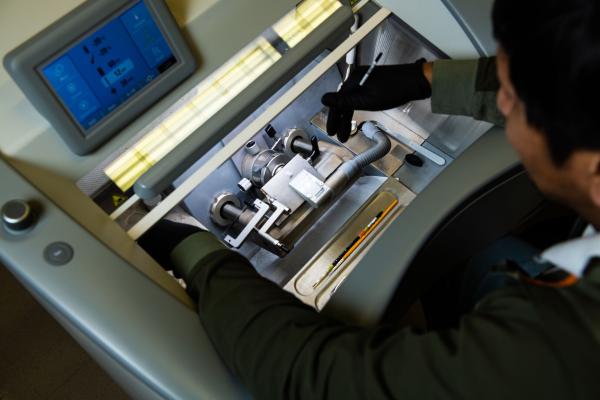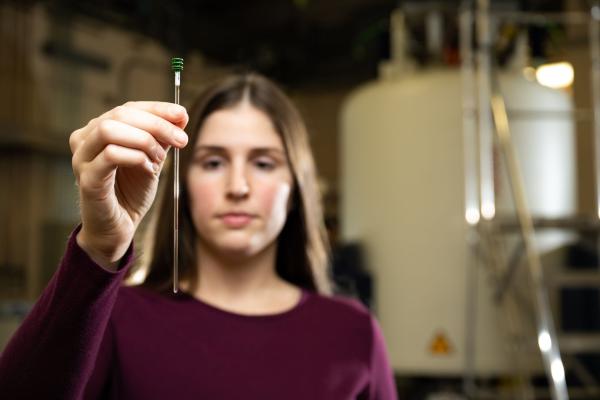Environmental Transformations and Interactions
Functional and Systems Biology
Computing, Analytics, and Modeling
‘Tis the Season for Calls for Proposals
User programs and facilities look to the science community for ambitious projects

Pauling Fellow Mickey Rogers demonstrates how to load samples into the new Thermal desorption gas chromatography-quadrupole time of fight-mass spectrometry (TD– GC–QTOF-MS) instrument in EMSL. Land-atmosphere processes are among the research focus areas of the Fiscal Year 2024 FICUS Program Call for Proposals with EMSL and ARM. (Photo by Andrea Starr | Pacific Northwest National Laboratory)
It’s that time of year again. Time for the Environmental Molecular Sciences Laboratory (EMSL) to seek another round of inspiring and groundbreaking science proposals from around the world. Two calls open December 14:
- Facilities Integrating Collaborations for User Science (FICUS) program with EMSL and the Atmospheric Radiation Measurement (ARM) user facility
- Large-Scale EMSL Research.
How can this announcement get any more exciting, you may ask?
This is how: Successful proposals will have access to EMSL instrumentation and collaboration with their scientists at no cost. Those awarded through FICUS will also have zero-cost access to ARM resources. Letters of intent for both calls are due by 5 p.m. PST on Feb. 9, 2023.
FICUS: Multiple user facilities in one proposal call
Through FICUS, EMSL and other user facilities enable ambitious research projects that benefit from state-of-the-art scientific instrumentation and collaboration.
Successful applications address projects that focus on land-atmosphere processes or aerosol-cloud interactions. The projects must be completed in a 24-month timeline, use a range of available capabilities, and generate datasets beyond what users of each facility could generate through separate projects.
EMSL selected fourteen projects for the Fiscal Year 2023. Climate change, carbon cycling, biofuels, methane hot spots at landfills, and soil viruses are among the scientific challenges the projects are addressing.

Large-Scale EMSL Research
Think big. Big ideas, big breakthroughs.
Large-scale research proposals seek to expand our scientific understanding in the areas of Environmental Transformations and Interactions; Functional and Systems Biology; and Computing, Analytics, and Modeling.

EMSL awarded funding for 30 research projects for the Fiscal Year 2023. The projects include developing tools and processes to improve plants, crops, and bioproducts, as well as mitigating climate change.
Helpful Hints for Successful Letters of Intent
Do you have a research question in mind, but don't know which of EMSL's Integrated Research Platforms (IRPs) or instrumentation might be best for a potential project?
Reach out to one of EMSL's Science Area or IRP leaders to discuss your research ideas.
Additional information about these upcoming proposal calls and navigating biological and environmental research at EMSL is available on the EMSL LEARN section of the EMSL website.

